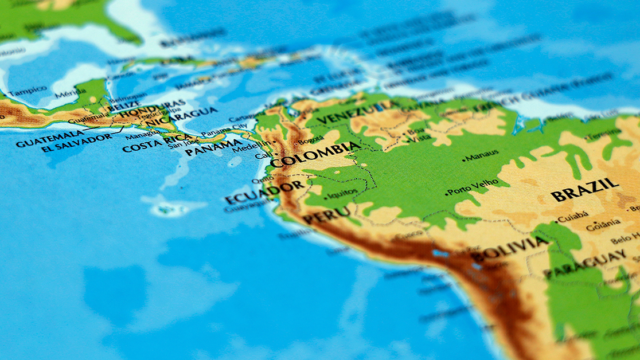This blog is the first article of our new Latin America series, where we explore the role of remittances for Latin Americans, along with the trends and challenges of cross-border payments in the region.
Cross-border payments and remittances are essential to millions of Latin American households and their small and medium-sized businesses. The region has consistently ranked as one of the highest recipients of remittances globally, reflecting the reliance of Latin American families on remittances to support their day-to-day expenses, healthcare, and education. In addition, Latin America is one of the fastest-growing e-commerce markets in the world, with retail e-commerce sales expected to reach around USD 138 billion in 2024.
Recent trends in cross-border payments and remittances
Steady growth of remittance inflows
Cross-border payments and remittance play a pivotal role in the economies of Latin American countries, serving as a lifeline for millions of households. A recent Mastercard whitepaper showed that overall remittances in Latin America have grown at an annual rate of 10%, compared to the 4% global growth rate. In 2023, remittances to Latin America and the Caribbean reached USD 156 billion, supported by a strong US labour market. Countries like Mexico and Guatemala are among the top 10 recipients, with Mexico alone receiving USD 66.2 billion in 2023, making it the largest remittance pipeline in the world.
Rise of digital and mobile payment platforms
Fintech innovations are rapidly transforming the remittance landscape in Latin America. Digital wallets and mobile banking applications have gained popularity as they are faster, more transparent, and cost-effective. Digital remittances in Latin America have grown by 23% annually, now accounting for 43% of the total remittances market.
Emergence of real-time payment systems
The number of fast payments per capita in Latin American countries has multiplied, rising from almost zero in 2019 to more than 3 per month in Peru, 12 per month in Costa Rica, and 24 per month in Brazil. Real-time payment systems, such as PIX in Brazil, Transferencia 3.0 in Argentina, and SPEI in Mexico, are changing how individuals and businesses conduct transactions.
Challenges in the Latin America region
Despite significant progress in the past decade, the industry still faces perennial challenges that hinder a seamless remittance process, including high costs, slow transaction speeds, lack of transparency, and regulatory issues.
High transaction cost
The cost of sending remittances to Latin America averaged 5.8% in 2023. Albeit slightly lower than the global average of 6.3%, it is still above the 3% United Nations goal. The fees have remained at the same level since 2015. Also, fees remain much higher for the smaller remittance corridors.
High unbanked and underbanked population
The financial inclusion gap varies among Latin American countries. About 70% of the population is either unbanked—without access to formal financial services—or underbanked, with access to bank accounts but limited access to credit or loans. This situation has made it difficult for recipients of remittances to access more efficient digital payment channels, forcing them to rely on expensive and slow cash-based services. The World Bank believes these unrecorded flows through informal channels to be at least 50% larger than recorded flows.
Technological infrastructure
Although smartphone and internet penetration in Latin America is relatively high, with an 80% smartphone penetration rate in 2023, there are still gaps in internet access and digital literacy, particularly in rural areas. These limitations reduce the effectiveness of digital remittance solutions, as many platforms rely on robust internet infrastructure, which is not uniformly available across the region.
Conclusion
Cross-border payments and remittance flows are crucial for Latin America's economic stability and the welfare of millions of households. Despite steady growth in remittance inflows and the emergence of digital and blockchain-based payment solutions, traditional challenges remain. High transaction fees, financial exclusion, regulatory barriers, and technological disparities still impede the full potential of cross-border payments in the region.
To address these challenges, the government in Latin America must promote financial inclusion through supportive regulatory frameworks and investment in digital infrastructure. Similarly, fintech companies should focus on developing more affordable and accessible payment solutions for the unbanked population. By doing so, cross-border payment systems can become more inclusive and efficient, ensuring that remittances continue to serve as a lifeline for millions across the region.







